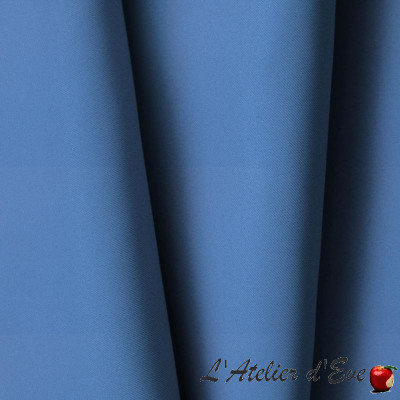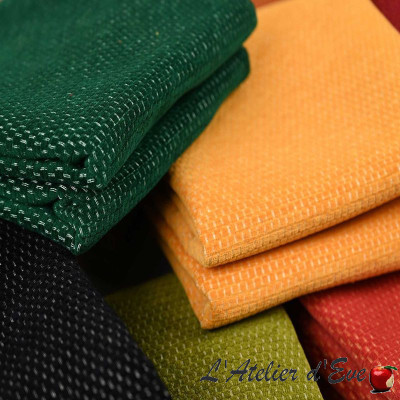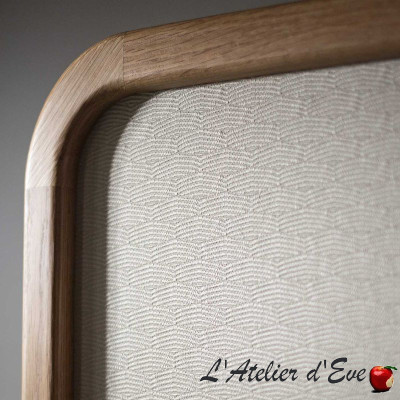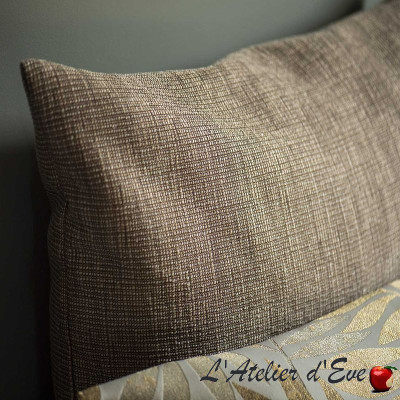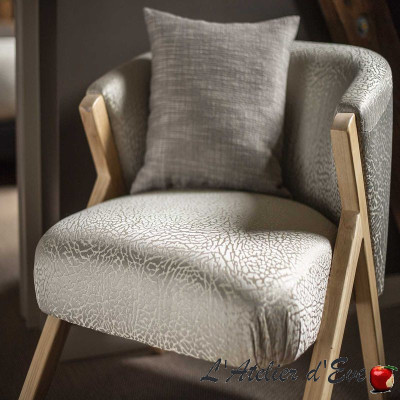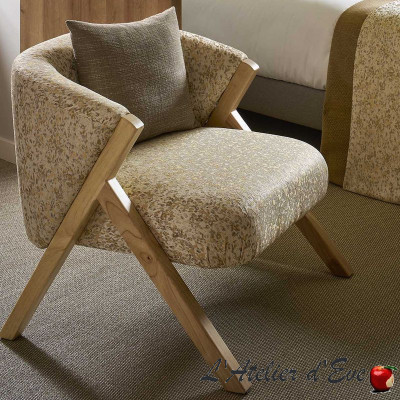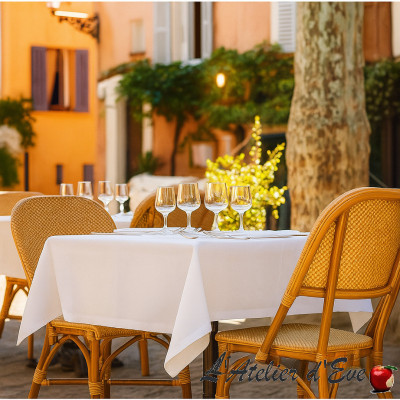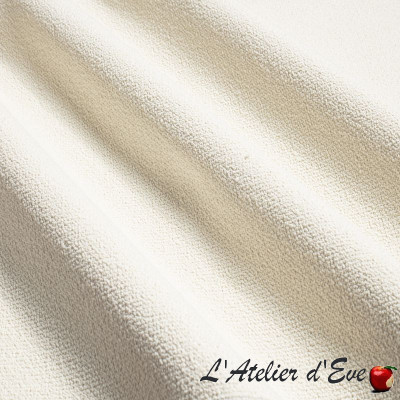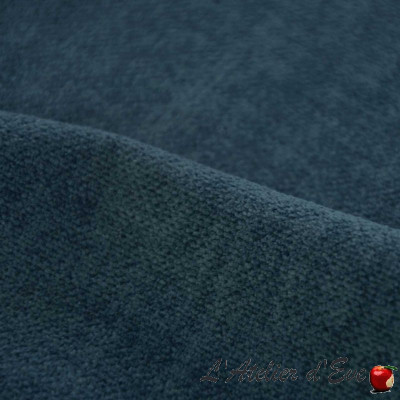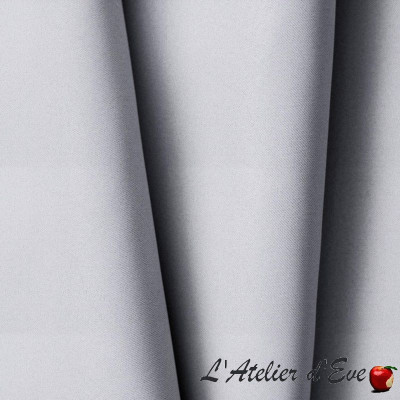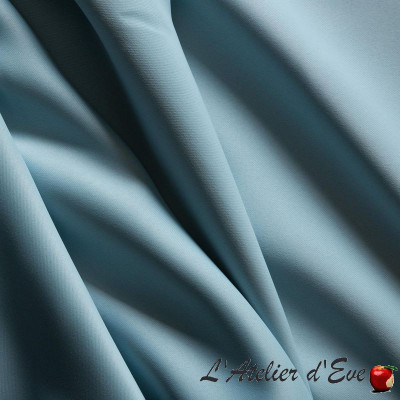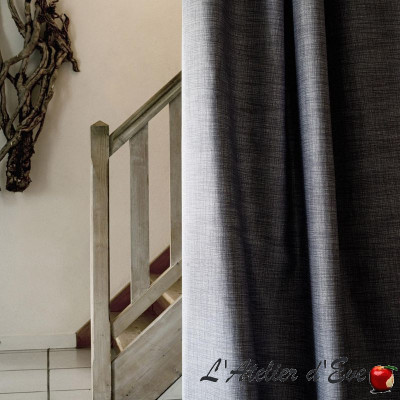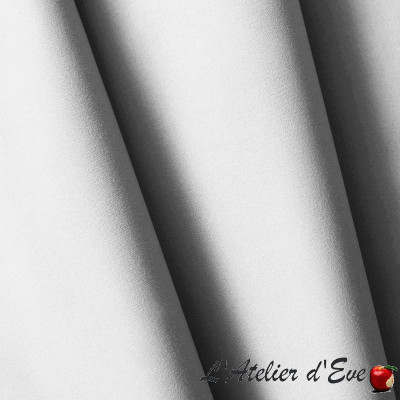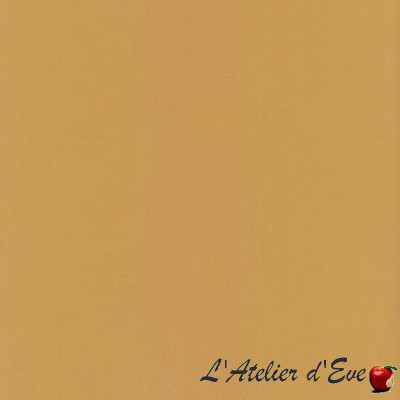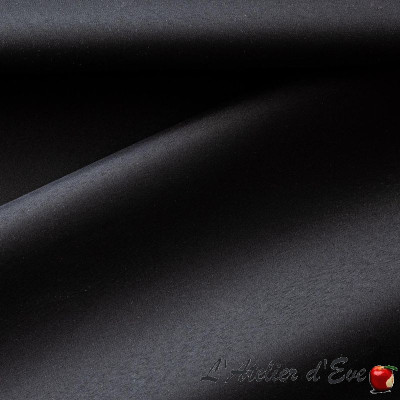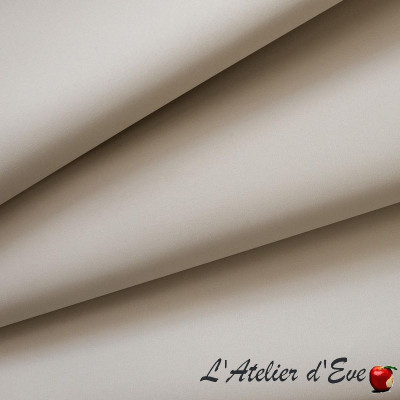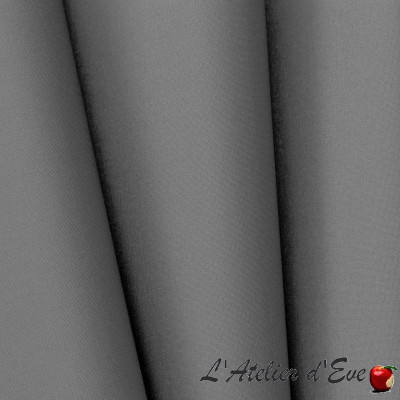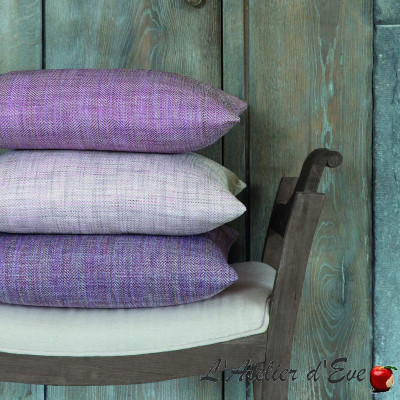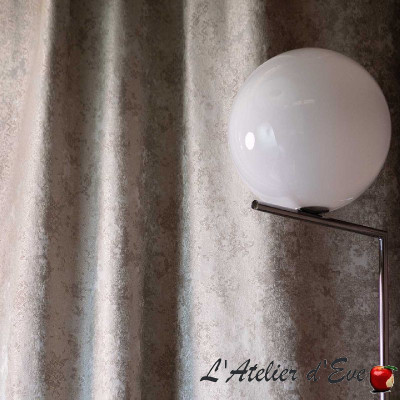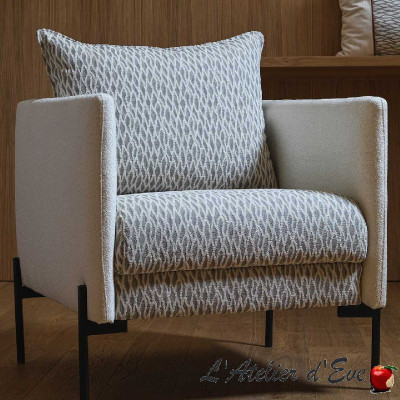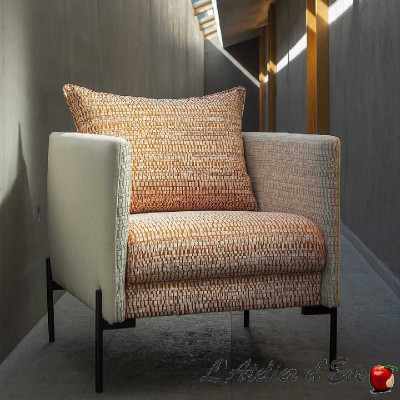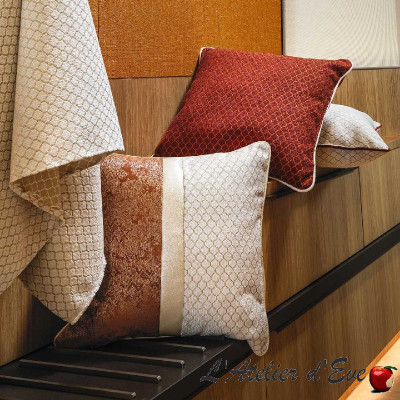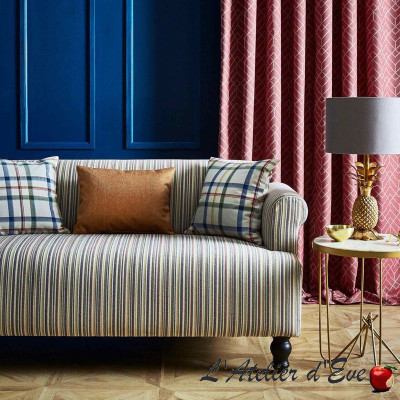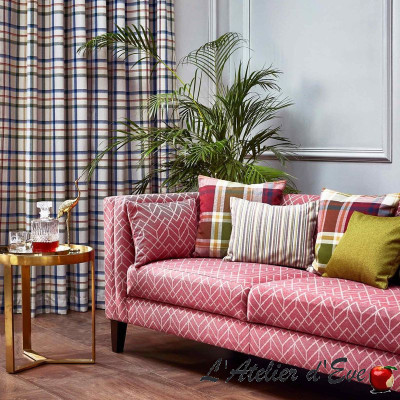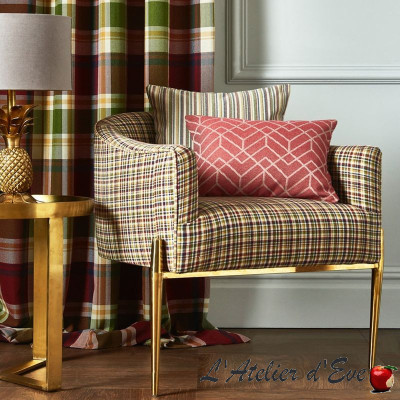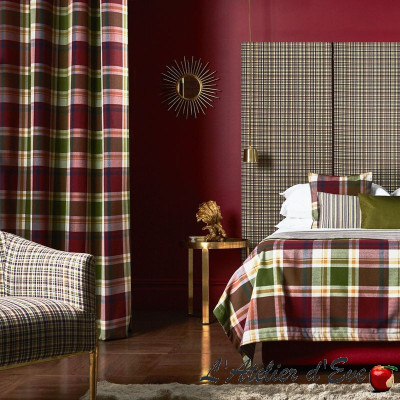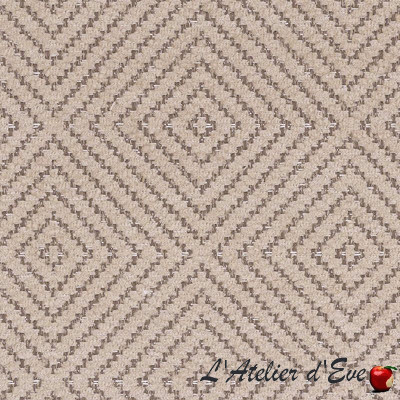Secure payment
- Français
- English
Viewed products
Non-fire back aluminized thermal curtain M1 "M140 Alu" SO
Non-fire sheeting M1 sold by the meter
Minimum 3 meters
Height: 280cm
The M140 Alu thermal curtain, with an aluminized back, filters light while limiting summer heat. It effectively protects your home from the sun's rays for optimal thermal comfort.
Made-to-measure sail in our workshop – Request for a quote
Availability date:



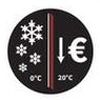
Delivery time: within 8 to 10 working days
More info
M1 Oeko-Tex Non-Fire Veiling Fabric Per Meter
This thermal non fire thermal veil M1 blocks the light rays and limits overheating in summer.
M140 Alu Veiling Thermal Indices
solar reflection 34%
solar absorption 36%
Solar Transmission 30%
Thermal conductivity
The thermal conductivity of a material refers to its ability to pass heat or stop it
(heat energy transmission). The higher the conductivity of the material, the more heat it lets through.
The lower its conductivity, the more effective it is as a thermal insulator, both against the heat and against the cold.
thermal conductivity is a characteristic specific to each material.
Copper and aluminum, for example, are materials with very high thermal conductivity. Wood,
polystyrene or air are good insulators.
To appreciate the thermal insulation performance of a fabric and by extension of a curtain, one needs to know its
resistance to heat transfer. This thermal resistance depends on thickness, density and conductivity
thermal of the material or materials that make up the material. It also depends, in particular, on the capacity of its
air trapping structure (armor).
Conclusion: the greater the thermal resistance, the more insulating the fabric.
thermal radiation.
Thermal radiation is the amount of energy that a heat source emits in the form of radiation
of an electromagnetic nature. It is thanks to the thermal radiation that the sun almost transmits to us
instantly its warmth.
In the case of a curtain, it is the sun's rays that will interest us, they are composed roughly
for half visible light, for half infrared and 1% ultraviolet.
When they hit the fabric, solar radiation is partly transmitted, absorbed or reflected by the latter,
these phenomena can be measured using 3 coefficients:
• Solar Transmission (Ts/Te,n-h): represents the share of solar radiation that passes through the fabric. A percentage
low testifies to a high efficiency in blocking this transmission of solar energy.
• Solar reflection (Rs/Re,n-h): represents the proportion of solar radiation returned by the fabric. A percentage
high indicates efficient reflection of solar energy by the fabric.
• Solar absorption (As/ae
): represents the share of solar radiation captured by the fabric. A small percentage
indicates low absorption of solar energy by the fabric.
The sum of the 3 is equal to 100: Ts + Rs + As = 100% of solar energy.
It is these phenomena that will make it possible to vary the temperature in a room when the curtain is drawn.
When evaluating the thermal performance of a curtain against sunlight, it is important to rely on
two coefficients that take into account all the characteristics of the installation:
• Total solar factor, Gtot or Gt:
This indicator measures the amount of energy from sunlight entering a room through a glazing and
sun protection material, in our case the curtain.
Ex: a GTOT of 0.40 means that 40% of the sunlight energy enters the room, so 60% is filtered
by the glazing + curtain installation.
> A low percentage indicates good thermal performance against the installation's sunlight
glazing + curtain.
The GTOT calculation takes into account:
• The position of the sun protection material (inside, outside or between the glazings).
• The performance in terms of transmission, reflection and absorption of the sun protection material in the
solar wavelength range (300 – 2500 nanometers) and visible light area (380 – 780 nanometers).
• Thermal properties of a defined glazing (e.g. standard glazing given in ISO 52022-2 or DIN
EN 14500/DIN EN 14501):
∙ A: Single glass > Ug = 5.8 W/(m²K) - g=0.85
∙ B: Double glazing with air filling > Ug = 2.9 W/(m²K) - g=0.76
∙ C: Double glazing with argon filling and low emissivity coating > Ug = 1.2 W/(m²K)- g=0.59
∙ D: Solar-controlled double glazing with argon filling and low emissivity coating > Ug = 1.1 W/(m²K) -
g=0.32
∙ E: Triple glazing with argon filling and low emissivity coating > Ug = 0.8 W/(m²K) - g=0.55
The default glazing recommended in EN 14501 is C:
∙ Double glazing with argon filling and low emissivity coating > Ug = 1.2 W/(m²K)- g= 0.59 A.
• Shade Change Factor/Shadow Masking Factor for Sunscreen Materials, HR:
This indicator measures the contribution of curtain protection for a given curtain + glazing installation (including
performances will have been calculated thanks to the GTOT), against the penetration of solar energy into the room.
Ex: An Fc of 0.25 (25%) means that the curtain improves the protection against energy transmission of the
sunlight entering a room, in a given curtain + glazing installation, compared to glazing alone.
> A low percentage indicates good performance in reducing energy penetration into a room.
The calculation is as follows:
• Fc = gtot/g, where g is the degree of energy permeability of the glazing.
The parameters of a curtain that affect thermal performance
against solar radiation:
The role of colour
Dark colors do not reflect the sun's rays or reflect them very little, but on the contrary absorb them, the
light colours, on the contrary, reflect them.
This is why for the same fabric, the coefficients related to thermal radiation will be different depending on
the chosen colour (which faces the glass and therefore the sun).
This parameter must be taken into account when choosing the curtain and the desired performance. That's why,
based on this observation, we tested our qualities mainly on light and medium colours.
Example of the variation of the thermal performance of our COLLEGE quality according to its color:
The role of aluminized surfaces
Aluminium is a very effective material against the propagation of electromagnetic waves and therefore against
solar radiation.
In the curtain, we often use this process to ensure protection against thermal radiation
regardless of the choice of color.
We can make:
Curtains with standard and customized eyelets (eyelets, ruflette, Flemish head...), boat blinds, Japanese walls,...
Free quote for bespoke products
L'Atelier d 'Eve is located in Provence, close to Nîmes, Uzès and Avignon.
Data sheet
| Laize | 280cm H |
| Composition | 100% aluminized FR polyester |
| Poids | 70g/m² |
| Expédié(e) sous | 8 to 10 working days |
| Utilisation | Ameublement |
| WASH | Wash excluded |
| MONEY LAUNDERING | Laundering excluded |
| IRONING | Ironing at low temperature |
| DRY CLEANING | Process of care |
| DRYING MACHINE | Drying machine excluded |
| Traitement | Non feu M1 |
| Traitement | Imo Part 7: Norme de réaction au feu qui est applicable dans le secteur maritime. |
| Confort thermique | Maintient la température intérieure et permet de réduire les dépenses énergétiques. |














